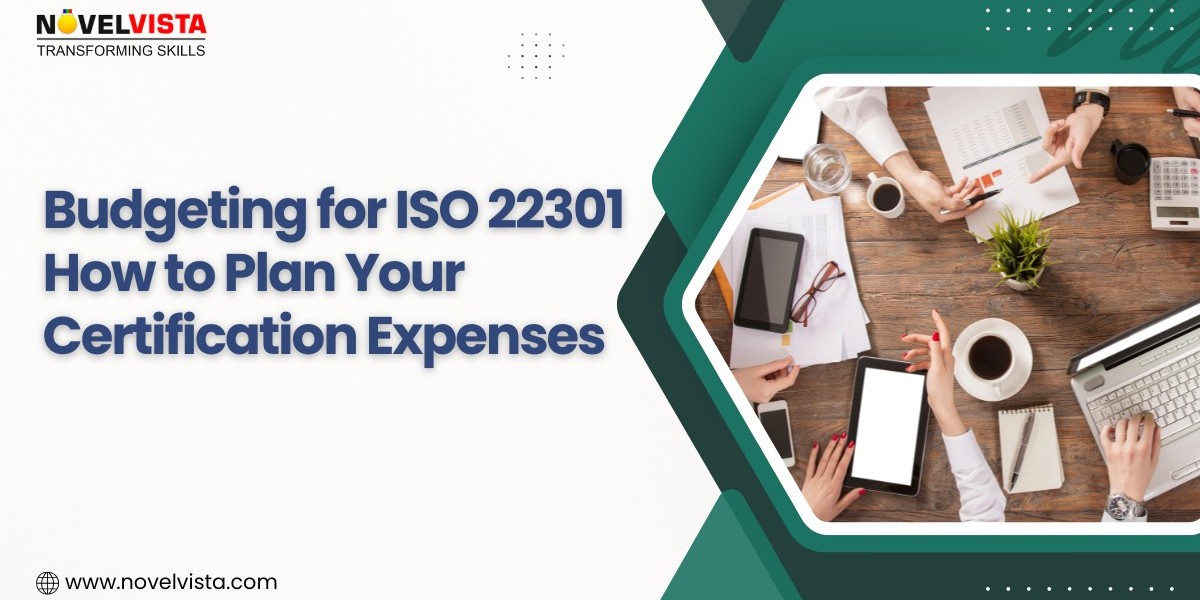Implementing a Business Continuity Management System (BCMS) in line with ISO 22301 is a strategic move for organizations aiming to enhance resilience and minimize disruptions. However, the path to certification requires careful financial planning. Budgeting for ISO 22301 involves understanding not just the certification fee, but also the associated costs of implementation, audits, training, consulting, and internal resources. In this article, we’ll guide you through the key factors to consider when planning your ISO 22301 certification expenses.
Why Budgeting Matters
Many organizations underestimate the cost and complexity of ISO 22301 implementation. Without a clear budget, there’s a risk of cost overruns, project delays, or even non-compliance. A well-planned budget ensures that the organization allocates sufficient resources for every stage of the certification journey—from initial gap analysis to final audits.
1. Initial Assessment and Gap Analysis
The first step toward ISO 22301 certification is identifying the gaps between your existing practices and the requirements of the standard. This is typically done through a gap analysis or preliminary audit, often conducted by a consultant or internal expert.
Estimated Cost: ₹20,000 – ₹1,00,000
Tip: Budget for external consultants if your internal team lacks the expertise. Their input is valuable for accurate cost estimation and smoother implementation.
2. Training and Awareness Programs
Educating your staff on ISO 22301 standards is essential. Training costs will depend on the number of employees, the level of training (awareness, internal auditor, lead implementer), and whether you opt for in-house or external training.
Estimated Cost: ₹10,000 – ₹1,50,000
Tip: Prioritize training key personnel involved in risk management, business continuity, and compliance.
3. Consulting and Advisory Fees
Hiring an experienced consultant can accelerate your ISO 22301 journey and ensure compliance with minimal errors. Consultants help in documentation, risk assessments, policy development, and audit preparation.
Estimated Cost: ₹50,000 – ₹3,00,000+
Tip: Choose consultants with proven ISO 22301 experience and check references or past projects for assurance.
4. Internal Resource Allocation
Don’t forget to include the cost of internal manpower. Project leads, department heads, and other employees will invest time in meetings, documentation, process changes, and reviews.
Estimated Cost: Varies depending on organization size
Tip: Track employee time spent on the project as part of your budgeting, even if there’s no direct cash expense.
5. Documentation and Process Updates
Updating existing documents and creating new ones to meet ISO 22301 requirements—such as risk assessments, business impact analysis (BIA), recovery strategies, and business continuity plans—takes time and expertise.
Estimated Cost: ₹25,000 – ₹1,00,000
Tip: If outsourcing this task to a consultant or document specialist, get clear estimates beforehand.
6. Technology and Tooling Costs
Some organizations may need to invest in tools for risk management, documentation control, or training. While not mandatory, these tools can enhance compliance and audit readiness.
Estimated Cost: ₹10,000 – ₹2,00,000+
Tip: Evaluate free tools or trial versions before committing to expensive platforms.
7. Certification Audit Fees
The final certification cost includes the audit by an accredited certification body. Audit fees depend on the size and complexity of the organization, number of sites, and number of employees.
Estimated Cost: ₹1,00,000 – ₹4,00,000
Tip: Compare multiple certification bodies and request detailed proposals.
To understand a full breakdown of certification expenses, you can refer to this detailed guide on ISO 22301 Certification Cost.
8. Surveillance and Recertification Costs
ISO 22301 certification is valid for three years, with annual surveillance audits and a recertification audit at the end of the cycle.
Estimated Cost (per year): ₹50,000 – ₹2,00,000
Tip: Include these recurring costs in your long-term business continuity budget.
Cost Optimization Tips
- Bundle Services: Some certification bodies offer packages that include training and audits at discounted rates.
- Do-It-Yourself (DIY): If your team is experienced, some parts like documentation and internal audits can be handled in-house to cut down consulting fees.
- Government Subsidies or Grants: In some regions, MSMEs may be eligible for financial support for ISO certifications.
Conclusion
Achieving ISO 22301 certification is an investment in your organization’s resilience and reputation. By planning your budget with realistic estimates and accounting for hidden costs, you can avoid surprises and ensure a smooth path to certification. Use this budgeting guide to align your goals, secure management buy-in, and track expenses efficiently. With the right strategy, your organization will not only meet compliance requirements but also build a culture of continuity and preparedness.







